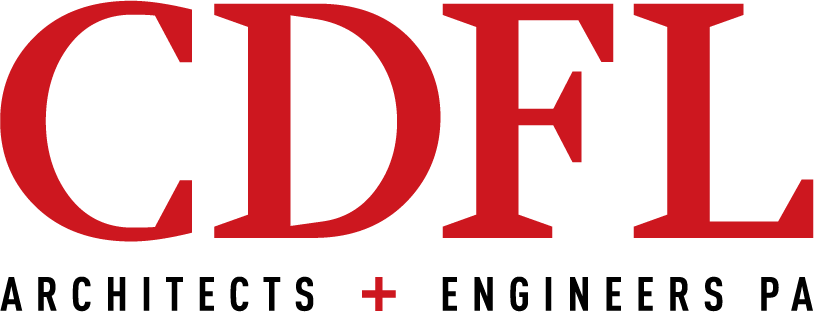COVID-19’s Impact on Senior Design
The COVID pandemic has disproportionately impacted senior care environments and has highlighted the challenges of delivering care while protecting residents, staff, and visitors. With over one million residents and 453,000 support staff in the United States, the senior living community makes up a small percentage of the total population but an exponential number of cases and deaths. The pandemic's lasting impact is still unknown, but fundamental changes in the way senior care is designed, operated, and organized have to be made.
Any changes will have to consider the balance between physical isolation to prevent disease spread with mental isolation caused by the physical separation. The “new normal†will be a balance of risks going forward. CDFL’s goal is to help our clients create safe environments for their residents while helping navigate the associated risks of these challenging times. The current risks are multi-faceted:
1. High-risk residents with compromised immune systems rely on staff who work long hours and have high levels of contacts. Staff cannot work from home, and residents must isolate to prevent infection, but contact is necessary to deliver care, opening the resident and staff up to exposure.
2. While isolation is essential to avoid spreading infection, it creates problems because of reduced socialization. The lack of socialization is proven to reduce immunity and cognitive decline.
3. Providers will need to have a renewed focus on staff amenities and wellbeing to attract the best and brightest. The intense demands and risks that caregivers are exposed to daily will continue to challenge a workforce that is already understaffed.
4. Existing and new facilities will have to evaluate current and future infrastructure needs. From HVAC systems, food distribution, maintenance, and WIFI/Internet strength, facilities will need to be more flexible for future events.
IMMEDIATE OPTIONS:
Immediate steps like adding hand sanitizers, installing UV lights for cleaning, or even boosting WIFI signals can be quick solutions. Staggering meals, encouraging outdoor dining when feasible, and adding grab and go dining options are all short term solutions that could make dining options safer for residents. These steps are much easier to achieve than long term changes.
In many instances, best practices in new construction have prepared newly constructed facilities to deal more effectively with infection control. Hand washing stations in corridors, isolation rooms, and dedicated storage space for Personal Protective Equipment have allowed caregivers the ability to adapt quickly. Another technology that is proving beneficial is UV lights that can be permanently installed or temporarily installed. The lights can be retrofitted into existing structures and can quickly clean a room between transitions of the resident.
LONG TERM OPTIONS:
Long term options to combat infection control will require capital expenditure and operational flexibility. Many trends, like the small home model, should see an acceleration in the adaptation by owners. The ability to adapt and be flexible will be critical for owners going forward.
Small Home Model - The small home model has proven beneficial during the pandemic due to the flexibility the small home provides. The smaller housing units, dedicated dining area, and close staff proximity offers an ideal condition for the segregation of population due to an infection outbreak.
Private Rooms/Private Bathrooms - Residents and their families have been driving the demand for private rooms and private bathrooms before the COVID pandemic. The demand for private rooms should accelerate once the pandemic is under control, while semi-private rooms will become less feasible to operate. Facilities should look at long term planning and weigh the option of renovating rooms or building new private rooms. Potential enhancements to the rooms include: planned anti-rooms with dedicated handwashing stations, adding a second door for patient welfare and viewing, adding a shared porch that allows residents direct secure access to the outside, the ability to turn all rooms into negative pressure isolation rooms, and integration of dedicated fiber optics to allow for secure data transfer to video conference with doctors/family.
Employee Amenities/Wellbeing - Infection control will continue to push the demands on caregivers. Unlike other professions, caregivers cannot work from home, must be on the front lines, and could work longer hours because of staff reduction due to sickness. The mental stress could cause burnout or high turnover rates. Therefore, staff amenities and support like centrally located nursing stations, dedicated staff breakrooms, dedicated dining areas, and access to natural light and the outdoors should be provided.
Staff centered design: caretakers are centrally located; designed to encourage staff engagement; multipurpose office.
Infrastructure - Investments should be made for robust WIFI and dedicated internet speeds throughout the facility. The move to telehealth is only as good as the infrastructure that allows these programs to function. This coupled with more internet-connected devices, video conferences, and other usages will require robust speed and capacity. Resident's televisions will become more than just a TV but the hub of the room and the center of their connectivity to the outside world.




